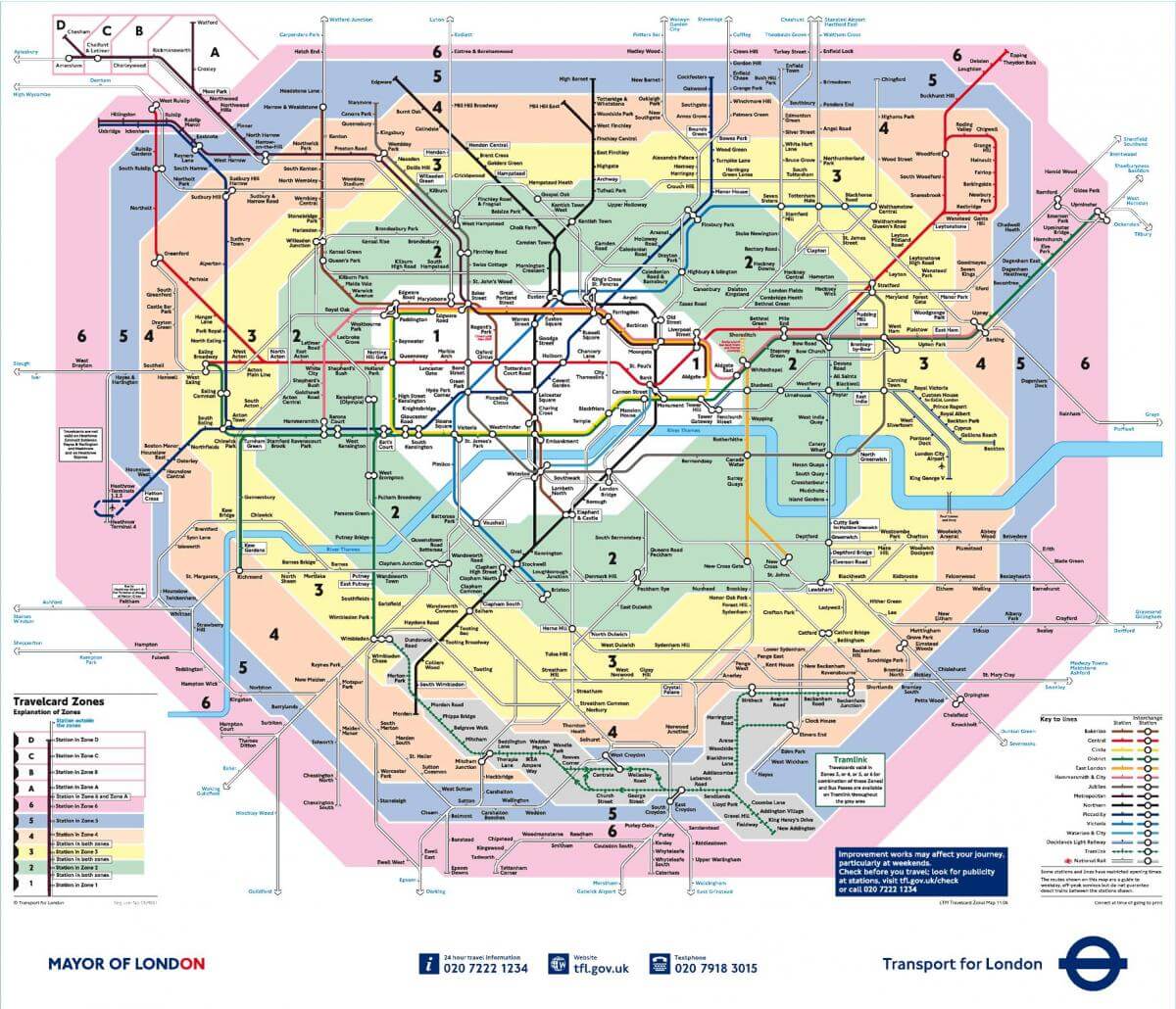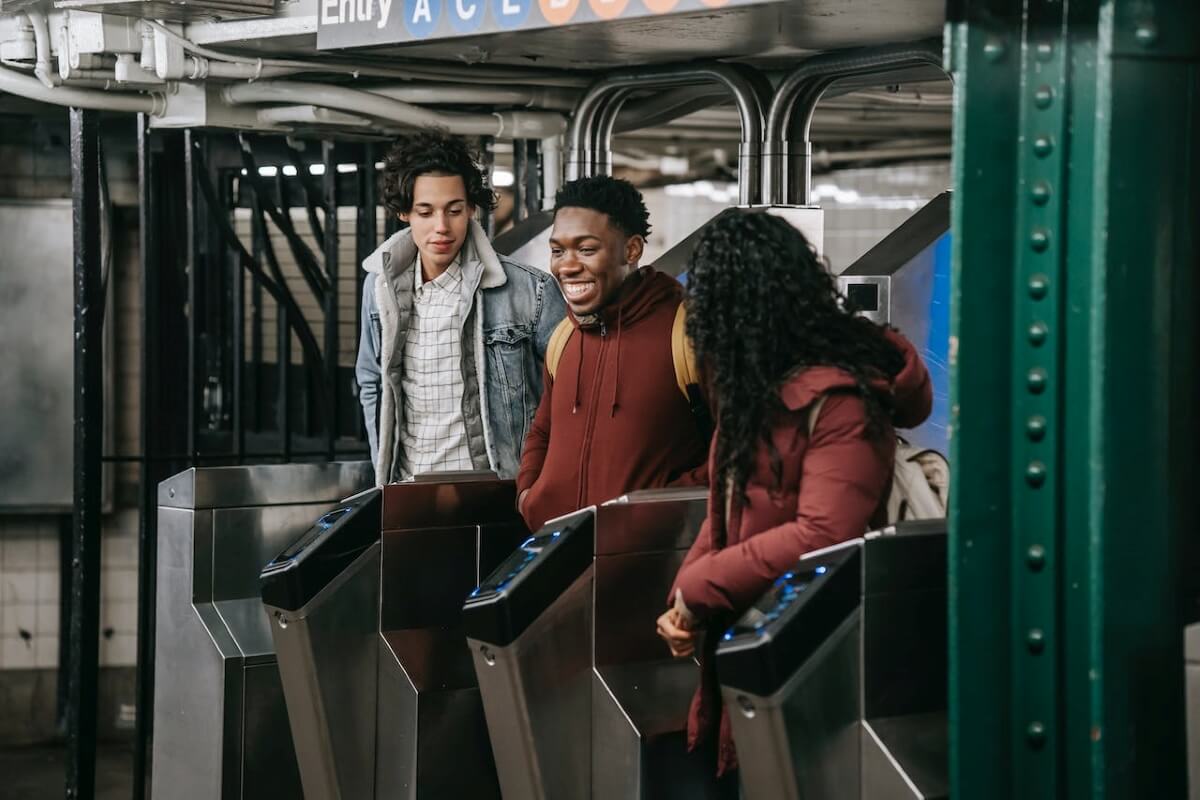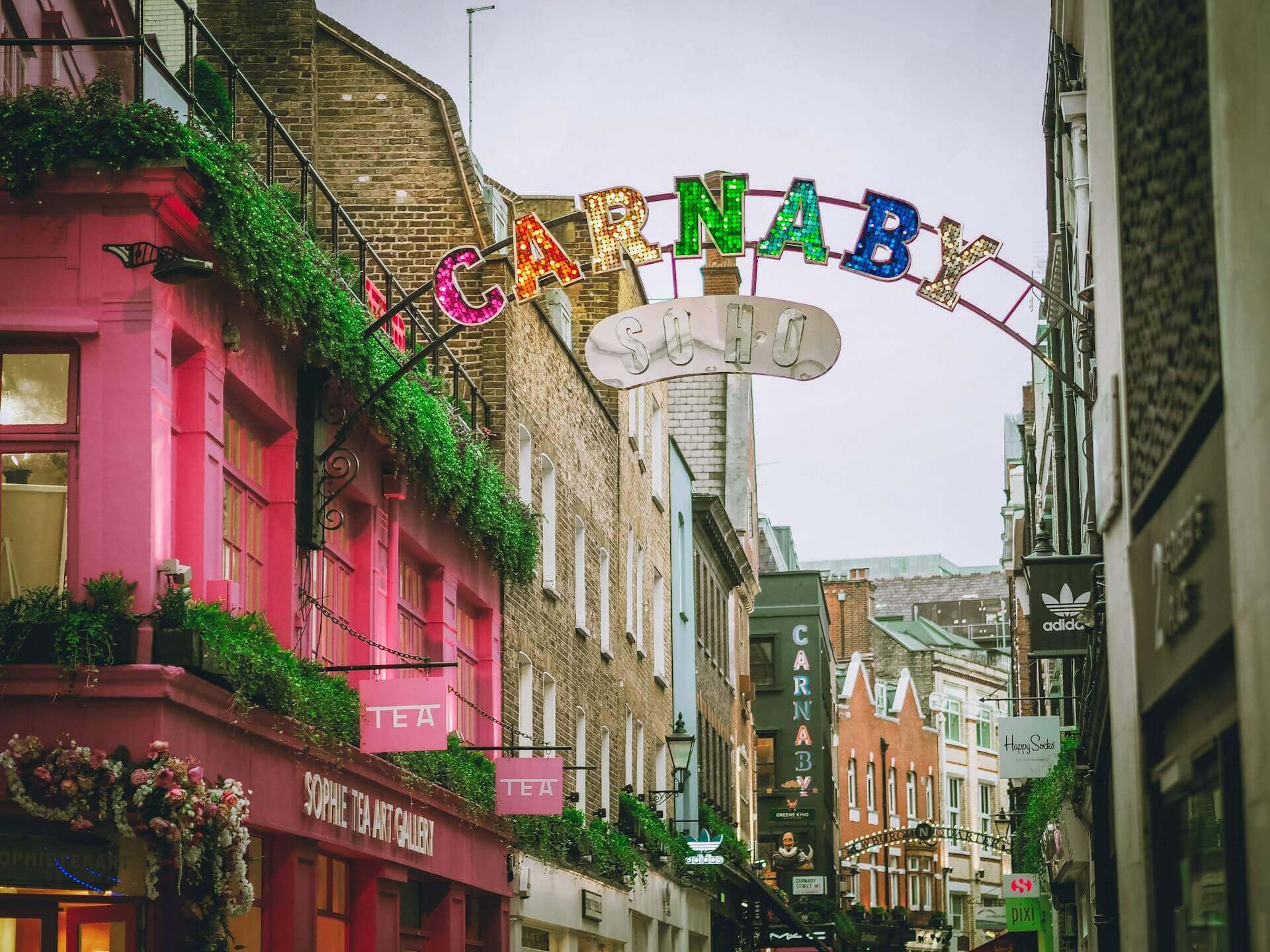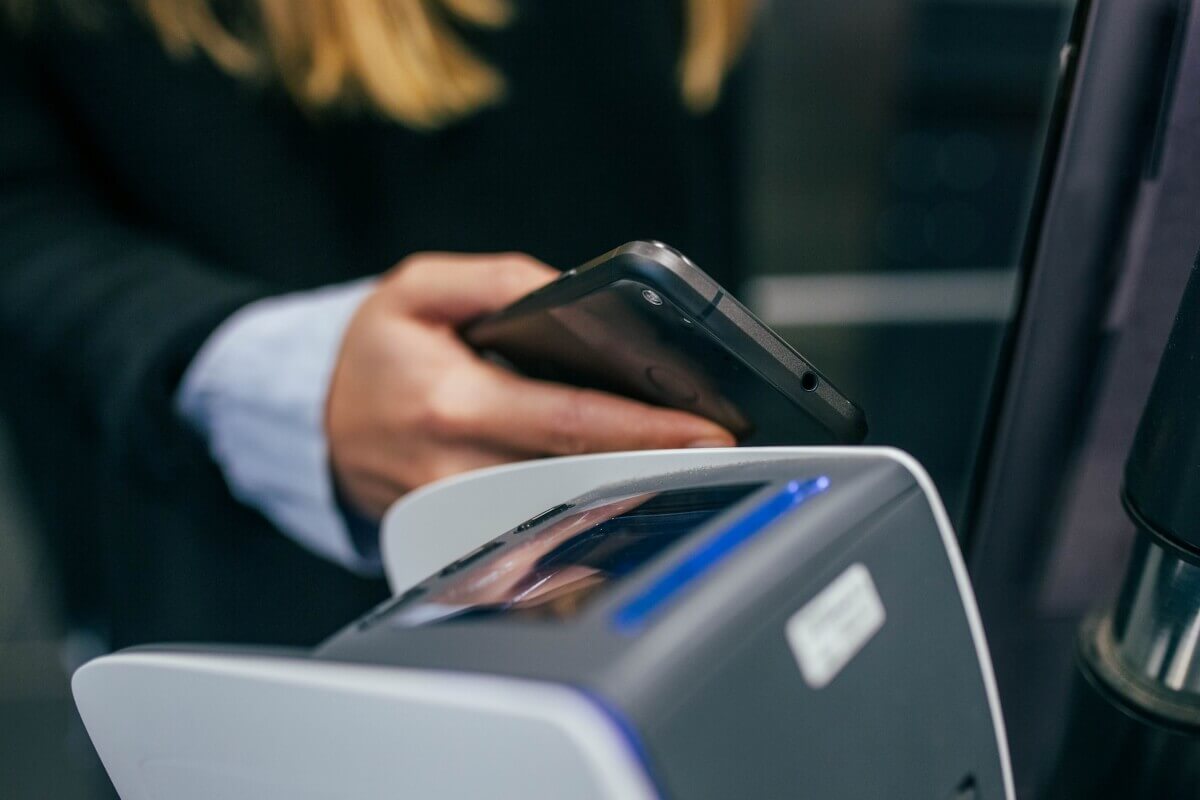Your Guide to Navigating Zone 1 London
Thinking about staying in London’s Zone 1? We’ve put together everything you need to know about this central part of the capital, from where it is and what you’ll find there, to how to get around with ease.
Where is Zone 1 in London?
Simply put, Zone 1 in London covers the central area of the city, as outlined by Transport for London (TfL) based on their fare system. It’s the innermost circle on the London Underground map, located near the majority of the capital’s iconic landmarks, educational institutes and tourist spots. These areas include popular places such as the West End for play enthusiasts and parts of Camden for quirky spots to unwind. You can also explore areas like Soho, Covent Garden, Oxford Street, Piccadilly Circus, Hyde Park, Kensington, Chelsea, Westminster, and Southbank, all part of Zone 1.
London zone map
To make things simple, the London Zone 1 map below shows the city’s travel zones overlaid on the rail lines, so you can see exactly where Zone 1 covers. It’s marked in white with a number 1, giving you a clear idea of what’s included within central London.

What is in Zone 1 in London?
Zone 1 is where you’ll find many of London’s most iconic attractions, cultural hotspots, and major transport links. Here are just a few standout landmarks and locations you can explore right in the heart of the city.
Cultural and historic landmarks in London’s Zone 1
- The British Museum – World-renowned for its vast collection of art and antiquities.
- The Houses of Parliament and Big Ben – Iconic political landmarks along the River Thames.
- Westminster Abbey – A historic coronation church and royal wedding venue.
- St Paul’s Cathedral – A stunning architectural masterpiece by Sir Christopher Wren.
- The Tower of London – Famous fortress, prison, and home of the Crown Jewels.
- London Bridge – One of London’s most famous landmarks, offering stunning views of the River Thames, The Shard, and the Tower Bridge.
Arts and entertainment venues in Zone 1 London
- The National Gallery – Home to the works of Van Gogh, Monet, and Da Vinci.
- The Southbank Centre – A cultural hub with music, theatre, and art events.
- Tate Modern – The contemporary art museum in a converted power station.
- The West End – London’s theatre district, home to shows like The Lion King and Hamilton.
Shopping and markets in London’s Zone 1
- Oxford Street – One of Europe’s busiest shopping streets.
- Covent Garden – A bustling area, home to boutiques, street performers, and the historic market.
- Borough Market – A foodie favourite for artisanal produce and street food.
Parks and green spaces in Zone 1
- St James’s Park – Central London’s oldest royal park.
- Hyde Park (partially in Zone 1) – One of London’s largest green spaces.
- Regent’s Park – Great for picnics and boating.
Zone 1 iconic areas and districts
- Soho – Famous for its buzzing nightlife and eclectic food scene.
- Mayfair – A popular spot for luxury shops and hotels.
- City of London – The historic and financial heart of the capital.
- South Bank – The main riverside stretch with attractions like the London Eye.
Which tube stations are in London Underground’s Zone 1?
There are eight major stations within Zone 1, as well as approximately 63 smaller tube stations. This makes exploring the city efficient, as you can stay on the Northern line from Battersea Train Station to head into the bustle of London.
Some of the most well-known and well-connected stations in Zone 1 London include:
- Euston
- King’s Cross
- Waterloo
- Victoria
- Paddington
- London Bridge
- Liverpool Street
- Charing Cross
- Tower Bridge
Getting around Zone 1 London
Beyond the London Underground, there are many ways to travel around Zone 1. These include:
- The Overground – Different from the Underground, but connected via stations that carry both services.
- London Buses – The famous double deckers aren’t just for tourist tours, but also make a great way to travel around overground while saving a bit of money. Usually these are cheaper than the Underground, but a bit slower. Plus, the Hopper Fare allows unlimited travel on these buses within an hour for £1.75, meaning you can make a connection without another cost.
- Bikes – Known as the Boris Bikes, these rentable cycles are available across London but especially in Zone 1, and make a fun way to get some exercise in while travelling around this central Zone.
- River bus – While not useful for every commute, the river buses, or ferries, can be useful for specific journeys in, out, and about Zone 1. Note that these have their individual costs, starting from £9 for an adult for Central.
- Car – Driving in Zone 1 offers flexibility, but it comes with challenges like heavy traffic, limited parking, and the London Congestion and Low Emission Charges. The area is busy, especially during rush hours, but it can be convenient for reaching more remote areas or for trips with heavy luggage.
For more information, read our handy guide on the best ways to travel around London.
How much is a Zone 1 travel card?
When it comes to getting a travel card for Zone 1, you want to consider the duration you’ll need it for.
A One Day Anytime travel card, also known as a One Day Off-Peak travel card for Zones 1 to 4 is £15.90, and gives you access to all London tube, train, bus and tram services for the day.
If you’re sticking around for longer, a 7-day pass for Zone 1, or 1-2, is £42.70, and a monthly pass for the same Zones is £164. Alternatively, annual passes start at £1708.00, with higher costs for more Zones but keeping you covered for the whole year. These rates offer flexibility for different travel needs while also locking in the price to a single, easy-to-measure figure per day, week, month or even year.

How to pay for London transport in Zone 1
There are various ways you can pay for transport to make your journey easier. Here are the most common methods:
Pay-as-you-go options
- Contactless Payment Cards: All of London’s public transportation system accepts contactless payment cards, so you can simply tap your debit or credit card to make it through the gates, or onto the bus. This works even if your card isn’t for a UK bank!
- Mobile Payment Methods: In Zone 1, you can pay with Apple or Google Pay. You can also use this on other forms of London public transport.
Transport for London uses their own technology to calculate a customer’s journey distance and charge them accordingly, so you should only be paying for the Zones you travel through. Thankfully, there is a cap in place. For example, travelling solely in Zone 1 has a daily cap on the Underground and Buses of £8.50, with a weekly cap of £42.70. This is the same for Zones 1-2, but goes up to £10 daily and £50.20 for Zones 1-3, so be careful about how far you venture.
Pre-paid options
- Oyster Card: These reusable cards can be topped up and loaded with credit. You can tap in and out at the start and end of your journey. Another benefit of an oyster card is that they offer daily and weekly capping, so you will never pay more than the cost of a daily or weekly travel card.
- Travelcards: As mentioned earlier, travelcards provide unlimited travel and save the hassle of purchasing a new ticket every time you’re commuting.
- Visitor Oyster Card: If you’re visiting a student, you can purchase a Visitor Oyster card before arriving in London. This offers the same benefits as a regular Oyster card but it is specifically for tourists.

Navigating Zone 1 London offers endless opportunities to experience the city’s iconic attractions, cultural landmarks, and vibrant student life. Whether you’re exploring world-class museums, enjoying West End shows, or relaxing in beautiful parks, Zone 1 has something for everyone. With easy access to universities, transport links, and famous neighbourhoods, living here ensures you’re always at the centre of the action.
